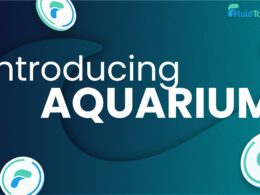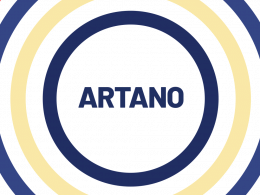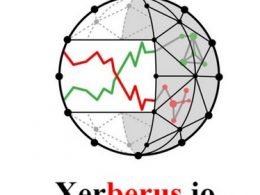Cryptocurrency wallets have a key, which for security of funds must be kept secret, of letters and numbers, called a private key, and another public key, encrypted in a seed.
This private key is used to sign transactions, and provides mathematical proof of wallet ownership.
To understand how Multi-Sig wallets work, we must first understand the following concepts:
- Public Address: When a user wants to receive funds, they reveal their public address, which is a hash version of a public key, to the other party.
- Public key: it is a cryptographic code that allows users to receive cryptocurrencies in their accounts, from the public address(es) it generates.
- Private key – used to send crypto and verify transactions, and only the owner of the wallet needs to know it if they want to keep their cryptocurrency funds safe.
If the user loses their private key, they will also lose access to their cryptocurrency wallet and funds. The Multi-Sig (multi-signature) wallet tries to solve this problem.
Technically, the term Multi-Sig refers to a type of digital signature that is created by a combination of many unique signatures.
There is also the need for shared funds, where more than one person owns them, and they must be managed jointly. The Multi-Sig wallet proposes that funds can only be spent with the signature of more than one of the owners, that is, with the use of the private key of more than one.
Unlike conventional, single-signature (Single-Sig or Single-Key) wallets, Multi-Sig wallets need two or more private keys before cryptocurrencies can be released.
The Proposal: a Wallet for DAOs
The creation of a DAO (Decentralized Autonomous Organization) requires maintaining funds, as part of its governance, to support its operation over time.
The purpose of any DAO is to manage and govern its protocol in perpetuity. One of the most important functions of the DAO is, naturally, to capitalize in such a way that it not only ensures that its ongoing operations can continue, but also invests in the future growth and success of the protocol. My article on the DAO topic: Treasury Management for Sustainability.
These funds are tokenized and also represent decision-making power, the vote.
ADAO has submitted a proposal for this FUND 8, which I have published: ADAO Creates Summon: The DAO Incubator for Cardano, in which the goal is to make building a DAO on Cardano as easy as filling out a web form, including applications with highly customizable templates.
For this project, a Multi-Sig wallet is necessary, because the DAOs need to manage community funds, where several managers have the power of that function, avoiding mismanagement of money, providing transparency and decentralization in the execution of decisions.
The success of this project would see multiple DAOs and community organizations using this app instead of a single signer address as a more robust and secure way to store group funds.
ADAO has developed an easy to use and open source multi-sig wallet.
ADAO intends to maintain, further refine and test this wallet application, and integrate with other community DAO management software and platforms such as “Done Collectively”.
The team expresses the need for a decentralized coordination server solution for Cardano Multi-Sig.
The Budget
Requested funds in USD 10,000
- Research and development: USD 5,000
- Hosting and server costs: USD 4,000
- User guides and documentation and beta tests with Cardano community organizations: USD 1,000
The Team
ADAO consists of an ever-evolving group of active contributors within the Cardano community. ADAO is divided into multiple autonomous “Work Groups”. WGs have been actively developing Cardano in a collaborative, decentralized, and community-focused manner.
ADAO core members have been working closely and collaborating with various organizations in the Cardano community, such as Staking DAO, SCAT DAO, Liqwid Labs, MetaDEX, and others, to develop best practices, optimize design, and ensure longevity.
A development subgroup within ADAO led by DZcodes (ADAO Frontend and App Dev. WG) has already developed a working MVP (Minimum Viable Product), and has been testing and reviewing it internally.
The team introduces itself like this:
AdaMinnow (also known as TCT) is an Entrepreneur and Owner/Operator. He is a member of multiple DAOs on other blockchains, including Ethereum and Harmony, and has been one of the main organizers of the community that brings people together to form ₳DAO.
Adam Rusch has a Ph.D. from the University of Illinois in Educational Policy, where he works as a professor of information sciences and an e-learning specialist. He is the founder of the Immutable Research Institute, and organizer of the Champaign Blockchain meetup group, passionate about cryptocurrency education and public policy.
dzCodes is a professional troubleshooter who started out as a potential web designer/frontend developer about seven years ago, but quickly moved from frontend to backend. He currently contributes full time to ADAO and other open source and blockchain projects.
Nicolas Cerny (Lovecoach) currently works as a Business Analyst focused on requirements engineering and project management. Its goal is to establish proper workflows and an organizational structure for ADAO. He is passionate about decentralized governance and all things cryptocurrency.
Riley attended the University of Washington for Computer Science and Mathematics with a keen interest in applied mathematics, blockchain, and AI. He quit his job writing software used by over 75% of Fortune 500 companies and working hard to get away from a 9-5 career. It is now an active contributor to various open source repositories maintained by organizations such as ADAO, Mlabs, and Liqwid Labs.
All code can be found on the ADAOcommunity GitHub: https://github.com/ADAOcommunity
https://github.com/ADAOcommunity/round-table
…
You can read the original proposal on IdeaScale: ADAO-Multi-sig Wallet Web Interface










